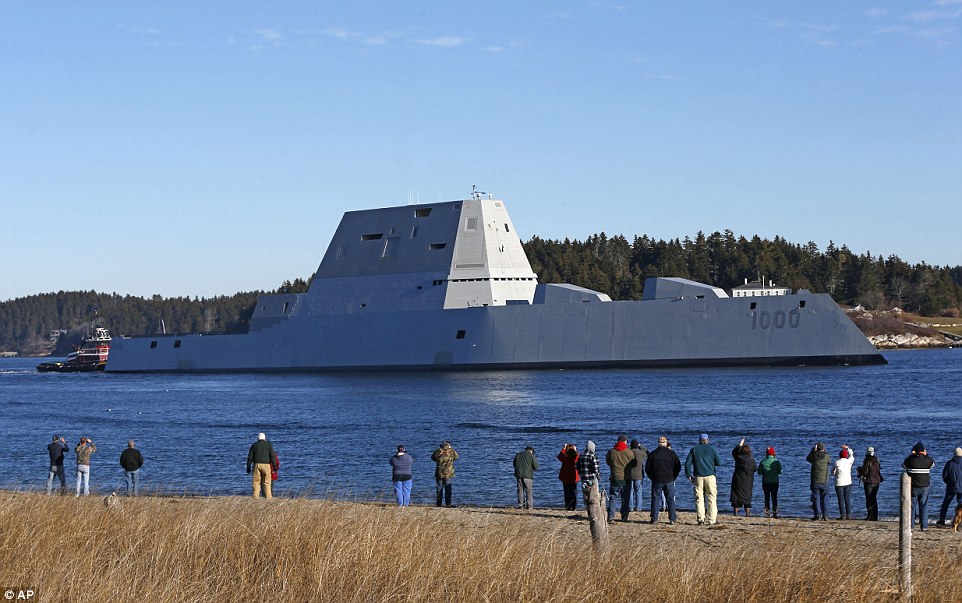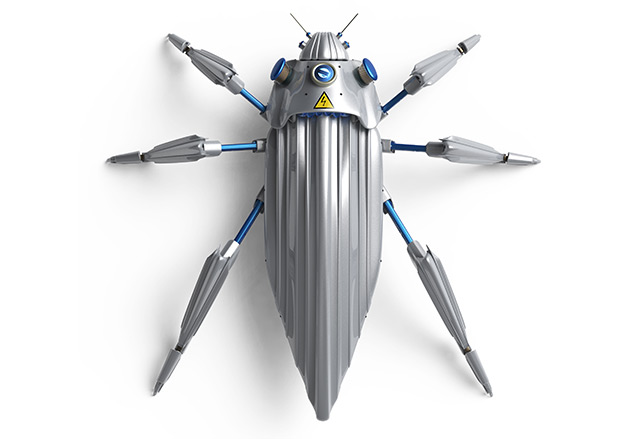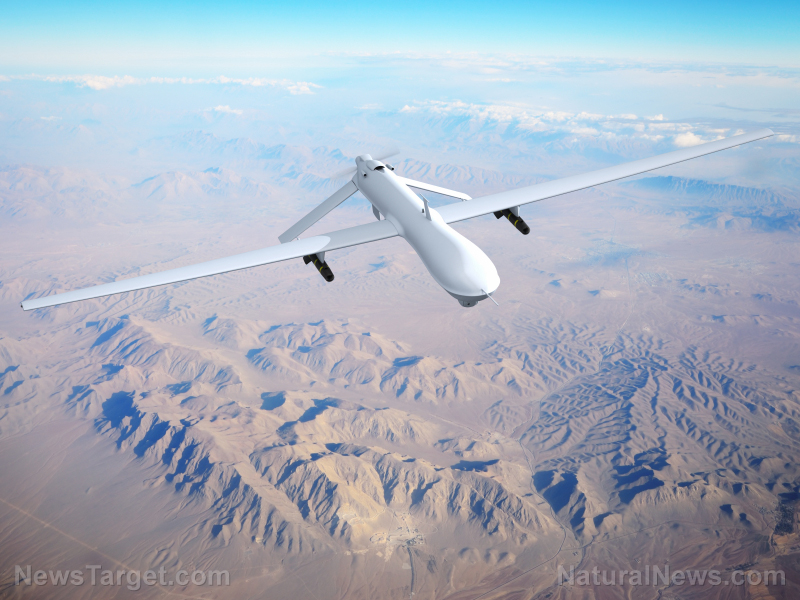The U.S. Navy’s newest stealth destroyer set sail Monday, hoping to prove the 600-foot long ship was worth the wait after years of setbacks.
The USS Zumwalt (DDG-1000) is the largest destroyer ever built by the U.S. Navy. It headed out to sea for the first time Monday, dis-attaching from the shipbuilder Bath Iron Works and coasting along the Kennebec River before reaching the ocean, where it intends to test its on-board systems.
Approximately 200 shipbuilders, sailors and residents gathered to watch the futuristic ship set sail. A lot hinges on the success of the ship, which the U.S. Navy considers essential to the Obama Administration’s Asian-Pacific strategy. After a series of setbacks, the cost of building Zumwalt skyrocketed to a whopping $4.4 billion — and that’s just the tip of the iceberg.[1]
The Zumwalt was built to replace the Navy’s current fleet of Arleigh-Burke destroyers, but financial overruns and delays forced the Navy to limit the assembly to three ships. The procurement of the three Zumwalt ships is expected to cost $12.3 billion, nearly 37 percent greater than the initial $8.9 billion program estimate. Including research and development costs, the project is expected to balloon to $22 billion in total.[2]
Easing taxpayer worries
Amy Lent of the Maine Maritime Museum, which works near the shipyard, tried to ease taxpayers’ worries about the price tag attached to the ship, claiming the Navy and shipbuilder Bath Iron Works have “tested the hell out of it.”
The ship is equipped with electrical propulsion, radar, sonar, powerful missiles, guns and a keen design to minimize detection by enemies. The Navy claims the structure of the ship will enable it to look like a small fishing boat on radar systems. The destroyer is approximately 50 percent larger than the current generation of destroyers. It uses turbines on par with those used in a Boeing 777 to generate electricity to drive the ship.[1]
“Over the next several days, the Navy will demonstrate many of the ship’s key systems and technologies,” claimed Capt. Thurraya Kent, a Navy spokeswoman. “The Navy and the shipbuilder are executing the test program of this first of class ship with extreme rigor and this initial at-sea period will allow for earlier issue identification and risk mitigation.”[2]
Stay up-to-date on the latest global issues with Collapse.news, powered by Fetch.news.
Critics question whether the stealth was worth the outpouring of wealth
Nevertheless, critics of the ship have expressed concerns about the stability of the ship and called into question whether it was really worth the price. Critics point out that the shape makes the ship unsteady. The Zumwalt’s hull slopes inward above the waterline, giving it a pyramid-like shape. If the Zumwalt is damaged during a battle, it could exacerbate this instability.
“It’s a true engineering challenge. They’re trying to make a ship with stealth characteristics that requires certain shapes. To do that, they have to compromise,” explained Matthew Werner, dean at the Webb Institute, which teaches naval architecture and marine engineering.[1]
Other critics, like Peter Singer, a senior fellow at the New America Foundation and co-author of “Ghost Fleet: A Novel of the Next World War,” have questioned whether the ship is appropriate for future warfare.[2]
“No ship is more interesting in the way that it links the past with the questions that surround the future of naval war,” he said. “It is both a throwback and a breakthrough. It is the size of a World War I battleship, originally designed for gunfire shore bombardment, a role many are not sure we even need anymore, but utterly revolutionary in other ways.”[2]
In response to these concerns, Kent noted, “The Navy has validated the ship’s design through extensive computer modeling and simulation, as well as scale model testing in various sea states, speeds and weather conditions. We are confident the design is safe, that the ship is seaworthy, and its operating parameters are known and understood.”[1]
The hope is to hand to the ship over to the Navy sometime next year.
Sources include:
[1] MetroNews.ca
[2] Stripes.com




















